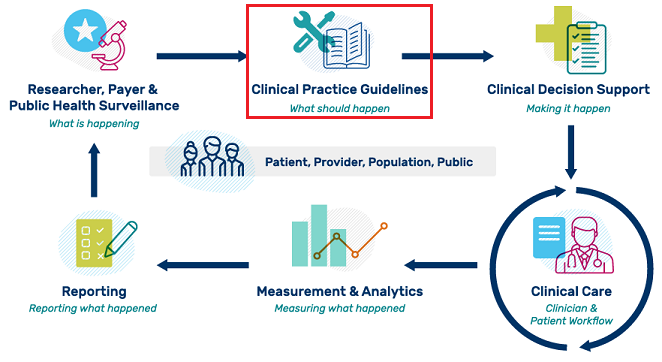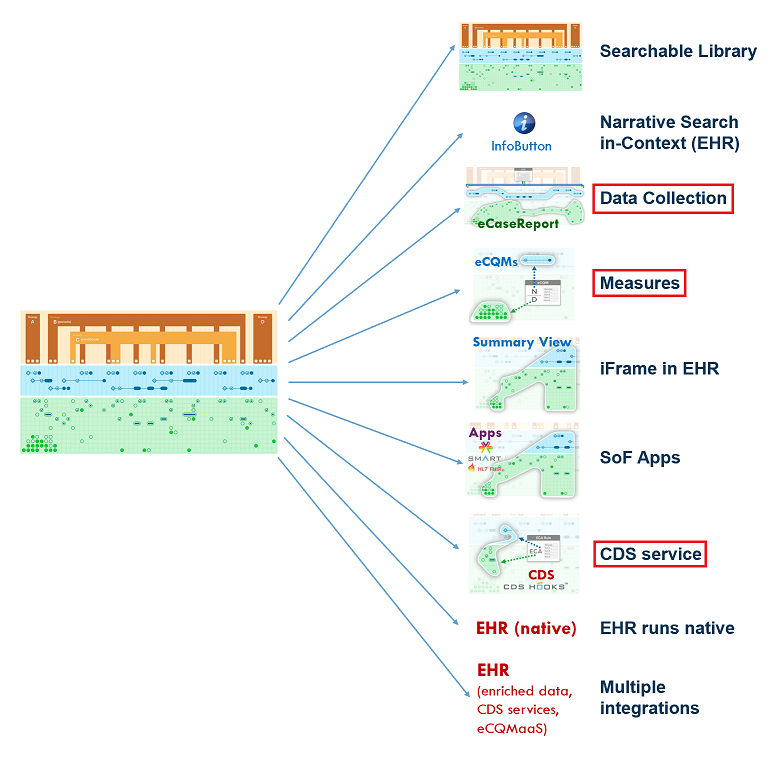
About Subnav

The ultimate goal of standards-based clincial practice guidelines is seamless, quick, accurate, and consistent translation and adoption of evidence-based guidelines into patient care.
Automating clincial guidelines considers the implementation of computable clinical guidelines for use in Clinical Decision Support (CDS), digital quality measures (dQMs), including electronic clinical quality measures (eCQMs) during guideline development and uses Fast Healthcare Interoperability Resources® (FHIR®)-based technical standards known as CPG-on-FHIR®. “A foundational tenet of CPG-on-FHIR® approach is the concept of one faithful representation of the written guideline in computable format (i.e., the computable guideline) with many ways to implement it.”

One translation
Many Ways to Implement
Adapted from: https://hl7.org/fhir/uv/cpg/documentation-approach-03-conformance-levels.html
Standards-based clinical practice guidelines provide several benefits and better ways to translate critical information into digital approaches or products including speeding up application dissemination and translation facilitation; and enhances connection with patient care.
